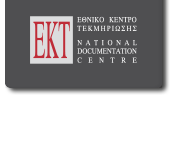Για να παραπέμψετε στο παρόν τεκμήριο παρακαλούμε χρησιμοποιήστε τα παρακάτω αναγνωριστικά:
http://hdl.handle.net/20.500.12038/248| Επίπεδο εγγραφής: | Έργο ολοκληρωμένο |
| Εξωτερική διεύθυνση διάθεσης πλήρους ψηφιακού τεκμηρίου με ανοικτή πρόσβαση (link): | https://www.mdpi.com/2077-0472/12/2/238 |
| Χρονολογία: | 2022 |
| Θέμα: | Agriculture Soil science Contaminants Γεωργία Εδαφολογία |
| Δημιουργός: | Solomou, Alexandra Germeni, Rafaelia Proutsos, Nikolaos Petropoulou, Michaela Koutroumpilas, Petros Galanis, Christos Maroulis, Georgios Kolimenakis, Antonios Σολωμού, Αλεξάνδρα Προύτσος, Νικόλαος |
| Τίτλος: | Utilizing Mediterranean Plants to Remove Contaminants from the Soil Environment: A Short Review |
| Γλώσσα: | Αγγλικά |
| Λέξεις-Κλειδιά: | Soil pollution; Heavy metals; Soil contamination; Phytoremediation; Flora |
| Προσδιοριστής: | Άγνωστος τύπος αναγνωριστικού: https |
| Περίληψη: | The use of contaminated soils in food production imposes the need for the reduction in heavy metals concentrations, using various techniques, in order to eliminate the toxic effects of pollution and ensure safety in the consumption of agricultural products. Phytoremediation is a promising, effective, and publicly acceptable method to remove soils’ toxicity. This study aims to investigate the current knowledge on plants’ metal tolerance mechanisms, the use of Mediterranean plants in phytoremediation, and the economic perspective for its application on large scales. A total of 166 research studies were systematically reviewed, based on the Preferred Reporting Items for Systematic Review and Meta-Analysis (PRISMA) guidelines. The findings indicate that phytoremediation has more advantages compared to other techniques. It can be a sustainable and affordable option, especially for developing countries, due to the relatively low application and maintenance costs. Many hyperaccumulating plants have been identified that can be used in soil cleansing, enhancing the applicability and replicability of the method. The selection of the appropriate plant species is based on their specific physiological characteristics to remove undesirable elements from the soils and, in certain cases, there is a preference for use of non-native species. However, such species may exhibit invasive behaviors, introducing high uncertainties and risks in the preservation of local ecosystems, especially in the Mediterranean zone, since they can have a serious impact on the environmental and ecological dynamics of the local plant communities. The use of native plants is generally more advantageous since they are better acclimated, have no effects on the local ecological balance, and can eliminate the legal restrictions for their use (seed availability, planting, etc.) |
| Εξειδίκευση τύπου : | Άρθρο |
| Τίτλος περιέχουσας πηγής: | Agriculture (MDPI) |
| Άδεια χρήσης: | Αναφορά Παρόμοια Διανομή  |
| Διάθεση ψηφιακού τεκμηρίου: | Πλήρης |
| Αρίθμηση περιέχουσας πηγής: | 12, no.2: 238 |
| Σελίδες περιέχουσας πηγής: | 19 p. |
| Εμφανίζεται στις Ομάδες Τεκμηρίων: | 1.1.1. Χλωρίδα 2.1.1. Εδαφολογία |
Ψηφιακά Αρχεία
| Αρχείο | Μέγεθος | Μορφότυπος | |
|---|---|---|---|
| utilizing meditteranean plants to remove contaminants from the soil environment.pdf | 1.19 MB | Adobe PDF | Δείτε/Ανοίξτε |

